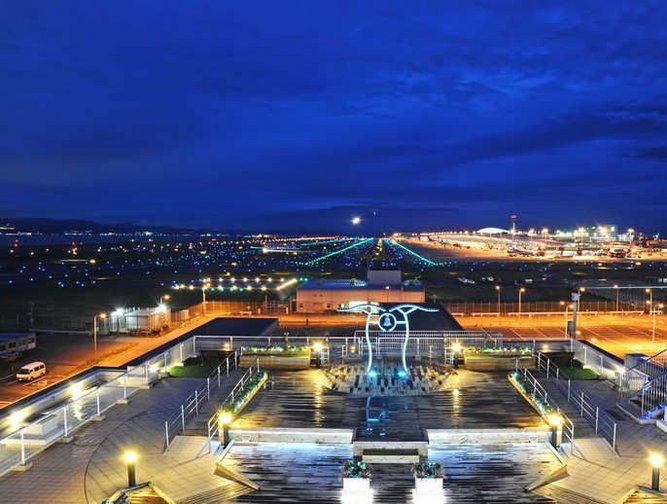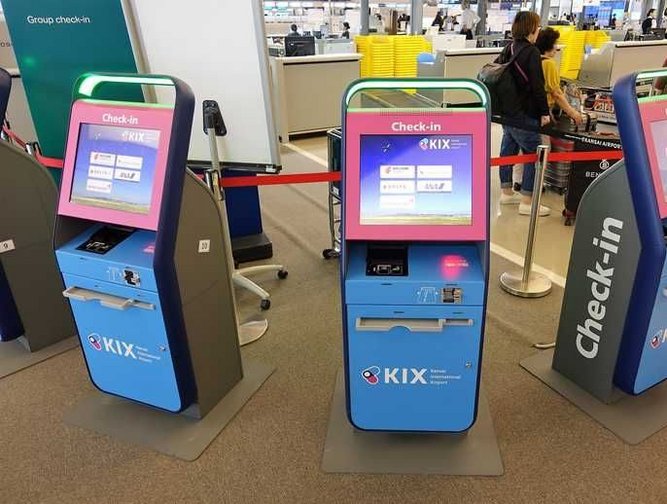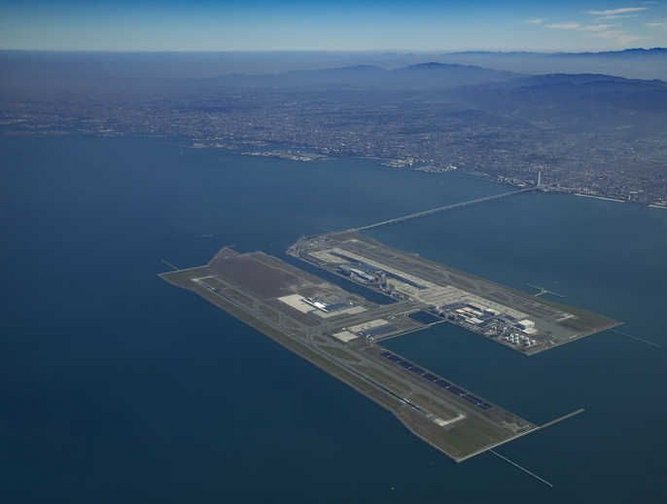Kansai Airports has sought to enhance the passenger experience through digitalisation
Japan is continuing to reap the rewards of a global tourism boom, where people from all over the world are keen to explore its rich history and breathtaking landscapes. From January to June during this year alone, the estimated number of international travellers exceeded 11mn, with an increase of 20% in overseas visits compared to previous years.
Whilst many travelers would have normally utilised Kansai International Airport, the country’s Osaka Itami Airport and Kobe Airport also significantly serve those situated in the nearby cities of Osaka, Kobe and Kyoto. Altogether, the three airports provide services to over 47.6mn passengers annually.
To ensure the airports remain fully equipped to service such increased traffic flow, shareholders at VINCI Airports and financial services group ORIX Corporation are directing significant investment towards the digital transformation of the airports, driving maximum value for tourists and residents, whilst unlocking its growing potential.
A key player within the international airport sector, VINCI Airports serves nearly 250 airlines worldwide. Spanning Europe, Asia and Latin America, the company served 156mn passengers in 2017 across all of its 36 airports.
In Japan, Kansai Airports successfully took over Kobe Airport in April 2018, and all three airports have amassed a combined growth of 9.6% in the second quarter. With international growth continuing to rise, Kansai International Airport achieved over 12% growth, with Kobe following closely behind at 5% growth.
The country continues to see increased numbers of visitors from neighbouring countries China, South Korea, Hong Kong and Macau, as well as attracting tourists from areas such as Europe, with attractive deals from low cost carriers and new routes which have recently become established.
By building on VINCI Airports’ world-renowned expertise alongside ORIX Corporation’s strong roots in the Kansai region, the three Japanese facilities are set to be fully transformed.
“We’ve secured a comfortable budget to invest in tomorrow’s IT and digital solutions,” says Kansai Airports General Manager for IT, Pascal Pipon.
“We aim to make the passenger journey as peaceful, easy and stress-free as possible. We will be leveraging digital solutions, such as self-service, mobile services and biometry, in order to achieve seamless travel. We want to integrate all steps of the passenger journey within one complete digital experience.”
In order to optimise the management of the existing airport infrastructures, Kansai Airports is transforming the organisation’s back-office applications.
“Our task is to centralise and consolidate all flight data and resources from the airports, automate operational processes to facilitate decision making,” he adds.
See also:
- How Chayora brings international hyperscale infrastructure to the growing Chinese data centre market
- Marsh Indonesia leverages smart technology to guide businesses through change
- Bolloré Logistics continues to drive its sustainability agenda on a global scale
Digitally enabled
Working with air transport IT specialist SITA, Kansai Airports has tested an intelligent check-in kiosk, which will identify bottlenecks in passenger flow, eliminate congestion and contribute towards a fully connected passenger experience. Through a number of inbuilt technologies, such as collision avoidance, the kiosk will move swiftly to different areas of the airport when required.
The facilities have also sought to introduce artificial intelligence devices, check-in robots, and self-propelled floor cleaning robots where Kansai Airports is turning towards automation across its entire portfolio.
Among initiatives to optimise the use of existing capacities, Kansai Airports has sought to minimise waiting times and boost passenger throughput using real-time queue monitoring tools.
“To do this, we implement different tools. One tool is called Passenger Flow Management, which provides real-time information surrounding passenger flow. Operation staff react to queues building up. We also display congestion information to the passengers at the airports and on our websites. With this technology, we have drastically reduced waiting times from 45mins peaks to 15mins,” notes Pascal.
“Automation helps increase the capacity of the airport to serve more passengers and better serve the airlines.”
Collaborating with various teams to provide the best solutions, Kansai Airports continues to look at harnessing new digital tools surrounding departures, arrivals, the scheduling of flights and the handling of various aircrafts.
“IT is helping with all of this, but we also have a lot of different actors, such as the airlines, ground handlers, the air traffic service provider, etc., which also provide essential services,” he says.
“The collaboration between all the actors is at the core of the optimisation of airport operations. Technology will be key for all to converge toward this common goal.”
With a keen awareness that the most important aspect will be to ensure that all passengers leave and arrive on time, Kansai Airports must remain completely operation-centric, with an emphasis on promoting an exceptional passenger experience, in line with VINCI Airports’ commitment to quality of service and customer satisfaction.
In the long-term, it will further introduce self-service facilities, and the passenger journey will become fully automated.
“The sharing of information between all actors will be critical to maximise airport capacity and passenger satisfaction,” concludes Pascal.
“Technology is essential to the future of Kansai Airports and the entire aviation industry.”






